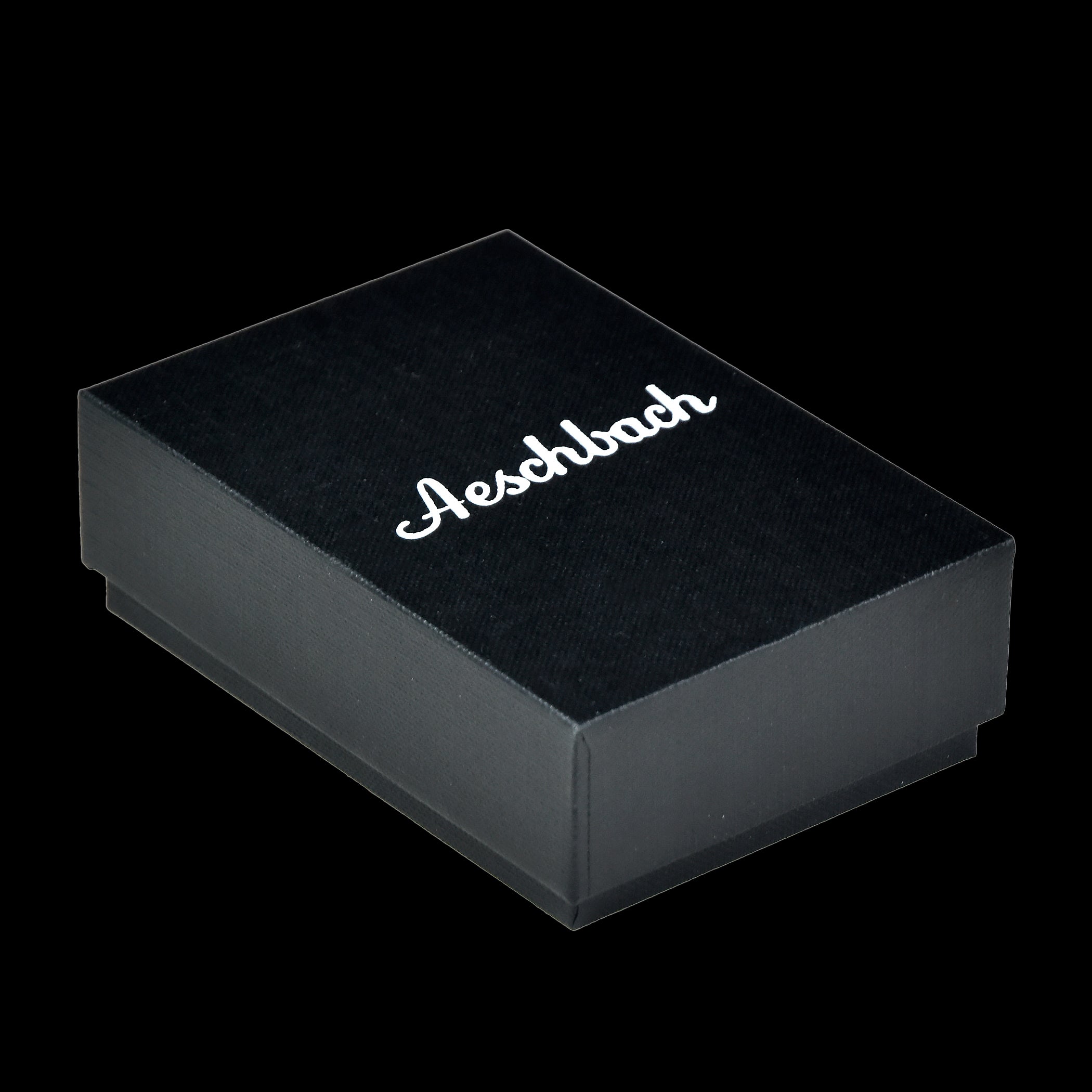






Aeschbach WW2 Pattern German Airforce (Luftwaffe) 17 Jewel Hand Wound Military Pocket Watch
Description
SKU: ABACH/RLMPW
Military pocket watches—and their civilian counterparts—are experiencing a significant surge in popularity. Historically, these timepieces were utilized across land, air, and naval applications. During World War II, both German (Wehrmacht, Kriegsmarine, Luftwaffe) and Allied forces (British and American) frequently employed pocket watches. At the time, wristwatches were generally quite small and difficult to read, averaging around 32mm in diameter. In contrast, the larger pocket watches, often measuring close to 50mm, provided superior legibility.
This classic World War II–pattern Aeschbach* military watch, featuring a subsidiary seconds dial, is based on typical designs once issued by the German Luftwaffe under the auspices of the Reichsluftfahrtministerium (RLM / German Air Ministry). During the war, pilots did not keep these watches; rather, they were loaned out on a mission-by-mission basis and returned to the quartermaster upon the pilot’s return. The piece offered here closely mirrors one of Aeschbach’s wartime designs. While original examples are now rare and command high prices, this watch is almost indistinguishable from those produced by the factory during the war. It is equipped with a traditional 17-jewel hand-wound movement and updated with a domed glass crystal, which is far more durable than the easily scratched acrylic crystals used in the 1940s.
The original wartime watches for the Wehrmacht, Kriegsmarine, and Luftwaffe were produced by numerous Swiss and German manufacturers, including Aeschbach. Founded in 1923 and still in existence today, Aeschbach watches has a storied history. Military watch enthusiasts have compiled a near-complete list of these wartime manufacturers on their website, “WW2 German Watches,” and they welcome contributions to fill any remaining gaps.
SPECIFICATIONS:
- Diameter: 47.5mm
- Length with Crown: 58mm
- Thickness: 14mm
- Crystal Width: 40mm
- Crystal Type: Domed Glass
- Movement: Cal. 9011-PI, 17 Jewels, 18 000 A/h
- Case Material: Stainless Steel
- Caseback: Stainless Steel
- Luminosity: Luminova
- Included: Complete with chain
- Packaging: Delivered in its original box
- Guarantee: 2-year factory guarantee
Aeschbach Watches: A Brief History
Aeschbach was a leading manufacturer of World War II timepieces. Tragically, the company suffered greatly due to its location in Pforzheim, a southwestern German town that was heavily bombed during the war. On February 23, 1945, the Royal Air Force (RAF) conducted its most devastating raid, resulting in approximately 17,600 fatalities—around 31.4% of the town’s population—and the destruction of about 83% of its buildings. The Aeschbach workshops were completely obliterated, halting production.
The company experienced a revival years later, after a family member discovered a cache of original technical drawings and some surviving watches among an elderly relative’s possessions. This discovery provided the foundation to restart production, marking the rebirth of Aeschbach watches.
MWC is a factory-authorized distributor for Aeschbach watches.
Winding Instructions and Guidelines
To fully wind the watch from a stopped state, approximately 30 turns of the crown are needed—fewer than the 40 or more turns typically required by other hand-wound watches. Once fully wound, the watch provides an average power reserve of about 36 hours. It’s essential to proceed carefully when winding.
For daily use, many owners find that fewer turns (around 25) suffice, as the watch is never allowed to run down completely. Over time, most users develop a sense of the ideal winding routine.
Most importantly, be careful not to overwind the watch. Overwinding occurs when the movement is wound beyond its designed limit, risking damage to the mainspring and other components. Manual-wind watches, unlike their automatic counterparts, can be overwound if handled improperly. Following these guidelines ensures long-term reliability and optimal performance.
Europe, UK, and Rest of World
Tracked Mail:
- Europe: €11.75 / £9.99 / US$12.95
- UK: £7.95 / €9.50 / US$10.50
- Rest of World: US$22.75 / €20.50 / £17.50
Express Courier (UPS or FedEx):
- Europe: €23.50 / £19.99 / US$25.95
- UK (UPS/DPD): £12.95 / €15.25 / US$16.95
- Rest of World: US$45.50 / €41.25 / £34.95
Note: The exact shipping cost may vary slightly depending on the weight and dimensions, but it will only differ by a small amount and will be shown at checkout. The above rates cover approximately 85% of parcels.
For more details click here
If you are not satisfied with your purchase or it does not meet your requirements, you can return it within 14 days of receipt. The item must be in its original condition and packaging. To return a watch, please notify us using the form at the link below.
Please note that the watch, strap, or other purchased item must be in new and resalable condition. The returns policy will not apply if the item has been worn, the plastic protectors on the dial and/or caseback have been removed, or if there are other signs of usage, such as a worn strap. Essentially, the goods should not have been used beyond what would be expected if you had handled or examined an item in a shop before purchase.
To request a return authorization number, please visit this link.
Read our full returns policy here









Aeschbach WW2 Pattern German Airforce (Luftwaffe) 17 Jewel Hand Wound Military Pocket Watch
